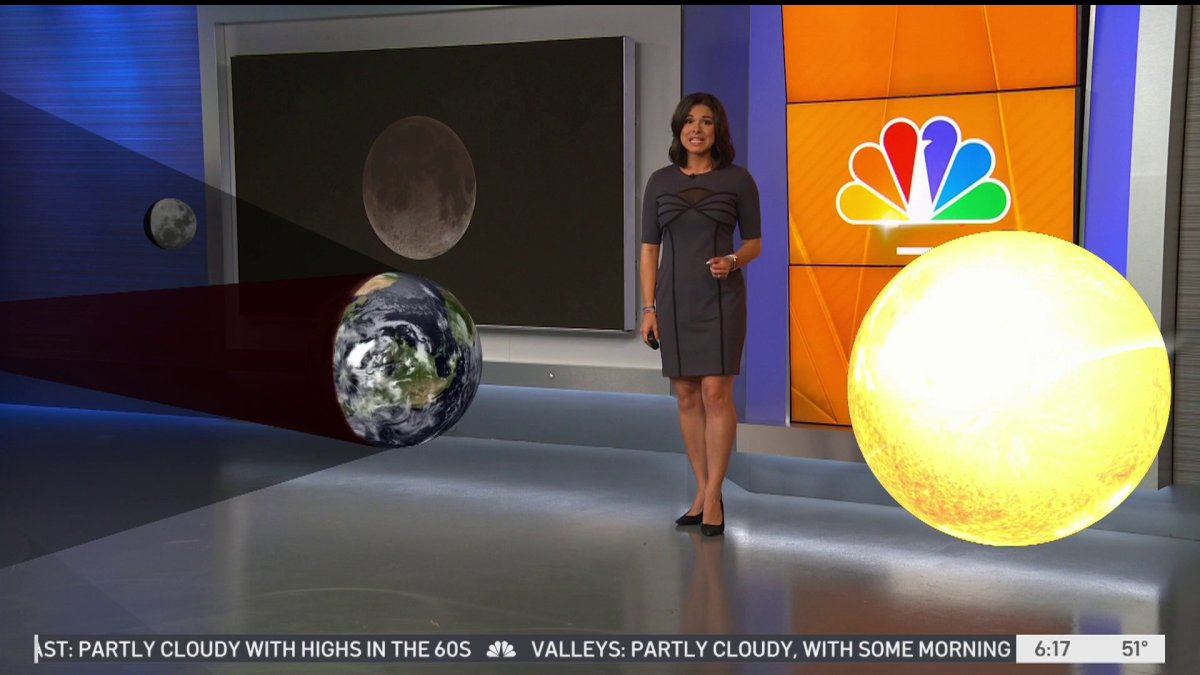
What to Know
- Skywatchers across North America will be able to see at least part of the celestial show.
- About 97% of the moon will be within the Earth's shadow during the peak of the eclipse.
- It will be the longest one in several centuries, with the peak lasting about 3 1/2 hours and the entire event going nearly six hours
Starry-eyed lovers of astronomy have something to look forward to overnight as a near-total lunar eclipse will be visible in North America.
The astronomical event is one to note -- during the eclipse, NASA reports up to 99.1% of the moon will be in the shadow of the Earth, so it's not considered a total eclipse, but it's close.
Get South Florida local news, weather forecasts and entertainment stories to your inbox. Sign up for NBC South Florida newsletters.
While that means this is still only a partial eclipse, it's enough to give November's Beaver Moon a red hue, and it will be the longest one in several centuries. The last time a partial lunar eclipse lasted this long was in 1440 and the next one won't be until 2669, making it a once-in-a-lifetime view.
What causes a lunar eclipse?
It's all because of the orbits of the moon around the Earth and the Earth around the sun, according to NASA.
Sometimes, as all three celestial objects move around the solar system, the Earth passes between the moon and the sun. When this happens, the Earth casts a shadow, just like any other object that moves in front of a light source.
That shadow has two parts. The darkest, inner part of the shadow where the sun is directly behind the Earth, is called the umbra. The more hazy and lighter part of the shadow around the edges is called the penumbra.
Lunar eclipses happen when that dark umbra falls on the surface of the moon, when the moon moves in its orbit through the space where Earth blocks light from the sun.
If everything lines up just right, the moon and the sun are on exactly opposite sides of our planet, and we get a total lunar eclipse where the moon is entirely covered by the umbra.
According to NASA, even during these total eclipses, sunlight filters through Earth's atmosphere, illuminating the moon in a way that makes it appear red from the ground on Earth.
But, more often, we get a partial lunar eclipse, meaning only some of the moon is covered by the umbra. During these events, the moon appears very dark where it is covered by Earth's shadow, and what you see depends on where you are on the Earth's surface relative to the moon and sun.
On Thursday, according to the Griffith Observatory, the moon's surface will be 97% covered by Earth's shadow -- almost a total eclipse, but not quite -- and the moon will appear to glow a copper or red color.
How can I see the lunar eclipse?
Experts say you don't need any special equipment to view lunar eclipses. It's safe to look directly at one, unlike solar eclipses. Unless you'd like to get a closer look, you don't need a telescope any more than you would need one to look at the moon any other night.
The moon will touch the Earth's outer shadow shortly after 1 a.m. ET, but the sky show will officially begin a little after 2 a.m. ET. NASA said the best views will likely come at around the peak of the eclipse, which means setting an alarm tonight for around 4 a.m. ET, or 1 a.m. PT.
The next full lunar eclipse will be on May 15, 2022.
Maggie More from NBC Los Angeles contributed to this report.